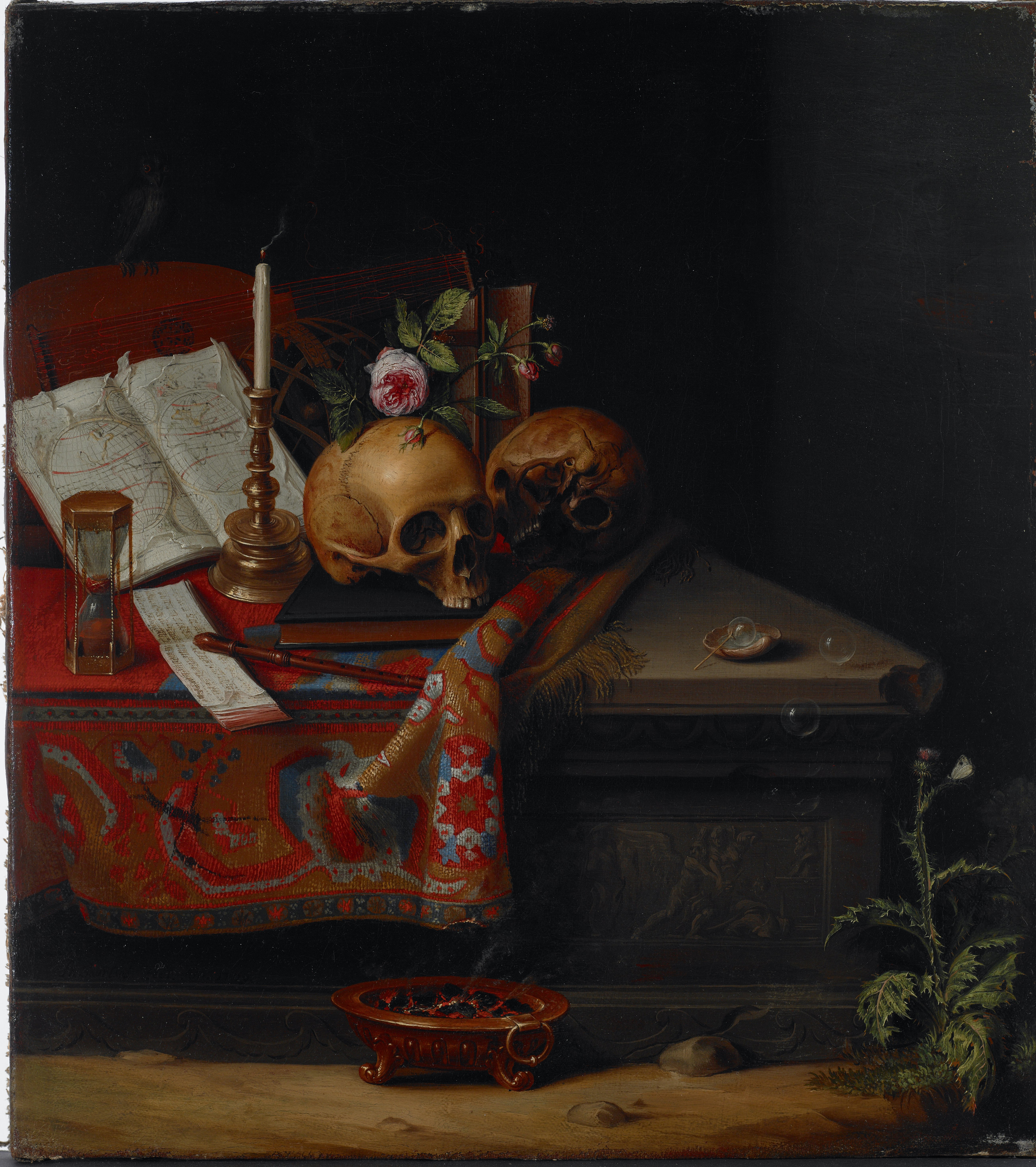Martwa natura Philippa Sauerlanda i narodziny nowoczesnej podmiotowości
Słowa kluczowe:
martwa natura, Gdańsk, Philipp Sauerland, Spinoza, vanitas, podmiotowość, fijnschilders, Willem van Mieris, Gerard de LairesseAbstrakt
The Allegory of Transience by Philipp Sauerland (Gdańsk 1677 – Wrocław 1762), an artist specializing in still life and animal painting, was purchased in 2015 by the National Museum in Gdańsk. The painting allows us to deepen our knowledge of Sauerland’s artistic roots, as well as the interpretation of the painting in the socio-cultural context of the development of Europe in the early 18th century.
In the paper a thesis is put forward about the Leiden sources of Sauerland’s work, which are connected with the painting tradition of the so-called fijnschilders, especially the work of Willem van Mieris. In the first decade of the 18th century, Sauerland painted The Young Woman in the Kitchen Interior, surrounded by perfectly rendered victuals, showing a similar gesture as in the famous painting by Van Mieris The Mouse Trap. In the signed painting from a private collection in New York, Sauerland chose historical themes. He presented a rare scene of David Giving Uriah a Letter to Joab. The painting refers to two famous works by Pieter Lastmann, but it is placed in an architectural set design analogous to Van Mieris’s paintings. An important element of the Allegory of Transience, in turn, is the relief visible by sliding down a carpet. This motif is also taken from the work of Van Mieries, but the iconography of the sculptural representation refers to Gerard de Lairesse’s print showing Chronos prevented by Prudence from destroying the statues. Sauerland is therefore close to the artists from Leiden in terms of the choice of themes, motifs, and the way they are painted. He also usually used a similar format of paintings. Like Van Mieris, the artist from Gdańsk signed his works with longer inscriptions. Although references to the Leydians are obvious in Sauerland’s early works, he does not make copies of their works, but focusing on the still life genre, he transforms them in his own style.
The second thesis of our essay is related to the transformation of vanitas motifs, which in Sauerland’s work reveal their secularized character. The traditional symbolism of transience, which draws on religion, is replaced by the ideas of rationalism, accompanied by the idea of reason that opens a possibility of overcoming sensual and emotional limitations. The work becomes an expression of emancipatory processes that take place at the turn of the 17th and 18th centuries in European culture. Referring to the philosophical work of Baruch Spinoza (notion of knowledge), we interpret Sauerland’s work as an expression of the emerging modern ideal of freedom, which was based on a rationalistic paradigm. It is thanks to wisdom (sapientia) that the subject is able to transcend the reality of the sensual guise.
In the last part of the text we point to the important role of practical wisdom (prudentia) and art (ars) in the process of liberalization that accompanied the social changes of the time. Using illusionism, Sauerland proposes an interpretative key to the viewer: the meaning of life is complemented by art: by making art, understanding art, or collecting artworks, the rational man can free himself from the fear of his own finiteness. The function of this still life is not to remind us of death, but to point out that contemplation of art is an intellectual and spiritual exercise that allows us to find the right attitude to life.
Downloads
Bibliografia
Bakker Piet, Willem van Mieris [w:] The Leiden Collection Catalogue, ed. Arthur K. Wheelock Jr., New York 2017, https://www.theleidencollection.com/archive/ [dostęp: 12.03.2020].
Bièvre Elisabeth de, Dutch Art and Urban Cultures 1200–1700, New Haven 2015.
Bryson Norman, Looking at the Overlooked. Four Essays on Still Life Painting, London 1990.
Hinter dem Vorhang. Verhüllung und Enthüllung seit der Renaissance – von Tizian bis Christo, Hg. Claudia Blüml, Beat Wismer, Düsseldorf 2016.
Logan Anna-Marie S., The „Cabinet” of the Brothers Gerard and Jan Reynst, Amsterdam–Oxford–New York 1979.
Melamed Yitzhak Y., Schechter Oded, Spinoza on Death, ‘Our Present Life’ & the Imagination, 2015, https://www.academia.edu/17582829/Spinoza_on_Death_Our_Present_Life_and_the_Imagination [dostęp: 30.03.2020].
Nadler Steven, Baruch Spinoza [w:] The Stanford Encyclopedia of Philosophy (Summer 2020 Edition), ed. Edward N. Zalta, 2020, https://plato.stanford.edu/archives/sum2020/entries/spinoza/ [dostęp: 30.03.2020].
Oszczanowski Piotr, Philipp Sauerland – zapomniany malarz gdańskiego i wrocławskiego baroku, „Porta Aurea” 1999, t. 6, s. 127–146.
Rosa Hartmut, Przyspieszenie, wyobcowanie, rezonans. Projekt krytycznej teorii późnonowoczesnej czasowości, przeł. Jakub Duraj, Jacek Kołtan, Gdańsk 2020.
Sloterdijk Peter, Sphären II. Globen. Makrosphärologie, Frankfurt am Main 1999.
Sobecka Anna, Nieznane obrazy Philippa Sauerlanda, „Quart: kwartalnik Instytutu Historii Sztuki Uniwersytetu Wrocławskiego” 2008, t. 1 (7), s. 45–57.
Soap Bubbles. Forms of Utopia Between Vanitas, Art and Science, ed. Michele Emmer, Marco Pierini, Umbria 2019.
Spinoza Baruch, Etyka w porządku geometrycznym dowiedziona, przeł. Ignacy Myślicki, oprac. Leszek Kołakowski, Warszawa 2010.
Stilleben, Hg. Eberhard König, Christiane Schon, Berlin 1996.
Stoichita Victor I., The Self-Aware Image: An Insight Into Early Modern Meta-Painting, New York 1997 (wyd. francuskie: 1993, wyd. polskie: 2010).
Taylor Charles, A Secular Age, Cambridge–Massachusetts 2007.
Taylor Charles, Nowoczesne imaginaria społeczne, przeł. Adam Puchejda, Karolina Szymaniak, Kraków 2010.
The Leiden Fijnschilders from Dresden [katalog wystawy], ed. Annegret Laabs, Stedelijk Museum De Lakenhal, Leiden, Zwolle 2001.
Tylicki Jacek, Rysunek gdański ostatniej ćwierci XVI i pierwszej połowy XVII wieku, Toruń 2005.
Ziemba Antoni, Iluzja a realizm. Gra z widzem w sztuce holenderskiej 1580–1660, Warszawa 2005.
Żuchowski Tadeusz J., Od świata przyrody do dzieła sztuki. Martwa natura jako problem autonomizacji sztuki [w:] Spór o genezę martwej natury, red. Sebastian Dudzik, Tadeusz J. Żuchowski, Toruń 2002, s. 13–27.


 Uniwersyteckie Czasopisma Naukowe
Uniwersyteckie Czasopisma Naukowe



